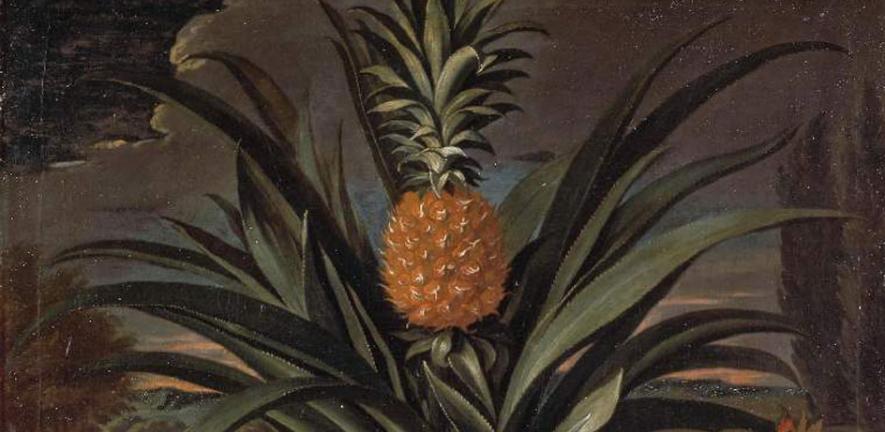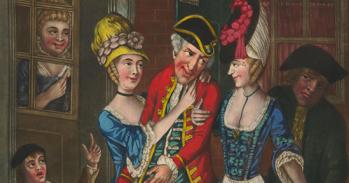
The painting is part of the pineapple’s success story as the ultimate status symbol of 18th century England.
The painting is part of the pineapple’s success story as the ultimate status symbol of 18th century England.
What is it?
This is an oil painting of a pineapple grown in Sir Matthew Decker’s garden in Richmond, Surrey. The painting by Theodorus Netscher, made in 1720, is a celebration of the successful cultivation in England of a pineapple plant that actually produced fruit. The triumphant presence of the pineapple right in the centre of the picture is emphasized by a plaque bearing a Latin inscription which is positioned on the picture plane immediately beneath the plant.
What’s the story?
The painting is part of the pineapple’s success story as the ultimate status symbol of 18th century England.
This curious looking tropical fruit was first encountered and eaten by Europeans on the voyages of Christopher Columbus. By the late 17th century the desire to possess and taste it meant the race was on to grow pineapples in Northern Europe. The combination of image, inscription and a note on the frame indicate that the winner of the race was one Matthew Decker who financed the successful cultivation of pineapples at the unlikely location of Richmond, Surrey, England. Far from being a rich man’s folly, the growing of exotic fruit enhanced his already spectacular social standing arrived at by skill in commerce and politics combined with sociability and enthusiasm for the arts. The inscription even indicates he served the fruit to King George I. The publication of Decker’s successful method of cultivation led to a scramble to follow suit in the gardens of some of the richest men of 18th century England. Pineapples and power went together.
Can we see it?
The painting is on show in the Fitzwilliam Museum (Gallery 15). This is exactly where it should be as Sir Matthew Decker was maternal grandfather of Richard, 7th Viscount Fitzwilliam of Merrion, eponymous Founder of the Fitzwilliam Museum. If the Founder’s grandfather had not been the kind of man who could successfully mastermind the production of pineapples in early 18th century England there would probably be no Fitzwilliam Museum.
The museum is open Tuesday to Saturday from 10.00am to 5.00pm; Sundays and Bank Holiday Mondays 12.00 noon to 5.00 pm. It is closed on Good Friday. Admission is free.
Want to know more?
In May, art historian Margaret Davis is giving a weekend course called Pineapples: art, status and the Fitzwilliam Museum at the Institute for Continuing Education. For more details go to: https://www.ice.cam.ac.uk/component/courses/?view=course&cid=3827&q=pineapple
This work is licensed under a Creative Commons Licence. If you use this content on your site please link back to this page.



